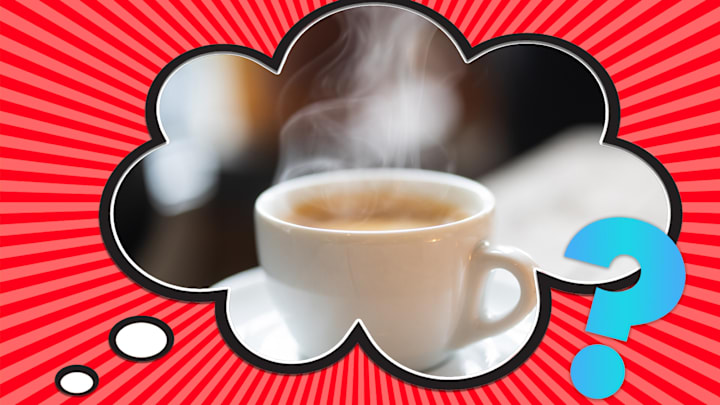According to the University of Washington, drinking coffee or sipping soup at anything above 110°F runs the risk of irritating your mouth. At 160 degrees, you’re in for an immediate burn.
While you may not know those exact numbers, most of us realize that a steaming drink or bubbling nacho tray could prompt injury, which is why we instinctively blow on it. But does puffing on hot food really help to cool it off, or are you just moving hot air?
The answer: Yes, and yes.
When you blow air over piping hot food, you’re sending air close to your body temperature—an average of 98.6 degrees—and using it to replace warmer air in a process known as convection. Because the air around the mug or plate is now cooler, it increases the rate of heat transfer.
Think of it this way: If you had a bowl of soup in a warm room, it would take some time to cool down. But if that same bowl were placed in an unheated room, it would grow cold much more quickly.
The reverse is also true: Think of an ice cream cone that rapidly melts on a hot summer day versus one that stays largely intact when you’re inside on a cool night.
When left alone, food will still lose heat by transferring energy into a bowl, otherwise known as conduction. Blowing on it speeds that up.
When you blow on food that contains lots of moisture, you can also enact evaporative cooling. That’s when your breath moves the water vapor away from the surface of the heated element, allowing more of the water molecules to evaporate. Think blowing puffs of steam away from your cup of tea.
Because evaporative cooling is more effective, you probably have an easier time cooling liquids than solid foods. You can also help food to cool off by breaking it up into smaller pieces, which will retain less heat.
The hotter the food or drink is, the more of a difference in temperature, so blowing on hot stuff is best. If something is merely warm, there may not be enough of a disparity in heat to make a difference.
This peculiar dance is made all the more difficult by the fact most foods taste best at higher temperatures. Soup, for example, tends to express umami while hot and gets saltier as it cools. Some believe soup tastes best between 136 and 162 degrees, or right around the danger zone.
If you’ve indulged too quickly, you might notice redness or a decreased sense of taste from a minor burn or blisters from a more serious one. Cool water can help, and so can maintaining good oral hygiene. Serious burns should, of course, be evaluated by your doctor.
Have you got a Big Question you'd like us to answer? If so, let us know by emailing bigquestions@mentalfloss.com.
